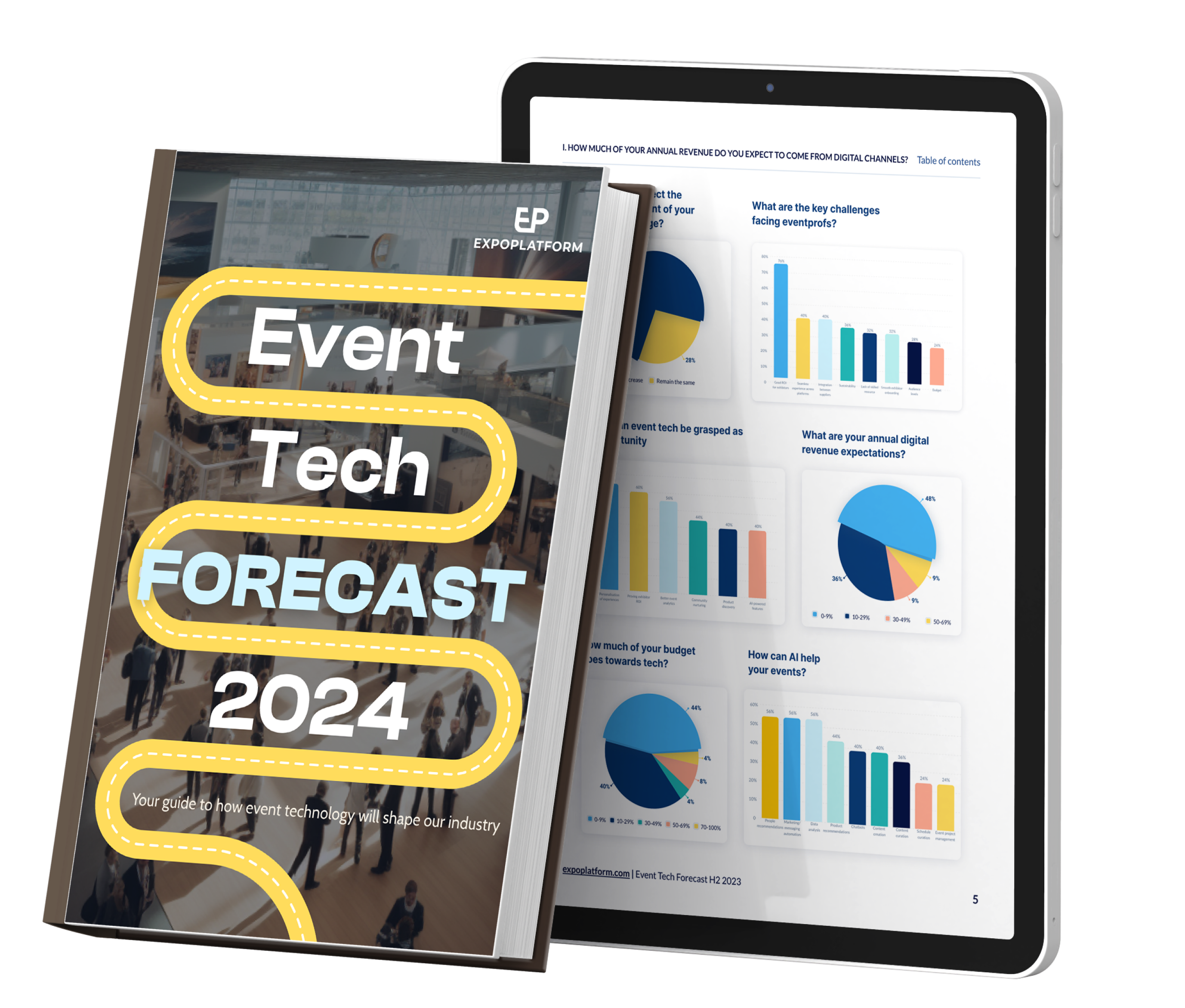
The ultimate email marketing guide for tradeshows
Email marketing is proven to build high-impact, low-cost campaigns to reach your audience and drive business growth.
If you are planning to organise an exhibition or tradeshow, emails help you connect with past and potential customers, build relationships and promote your event.
But creating an effective marketing campaign can be a challenge because inboxes can be overloaded and a lot emails can get lost in the noise.
Which template will work the best for your tradeshow? How to segment the list to make sure you’re sending the right message to the right people? How to increase the open rate of your emails?
Our guide to email marketing for tradeshows attempts to answer these questions and more.
Here’s what you will read:
- Why do you need an email marketing strategy?
- Benefits of personalising your email campaigns for tradeshows
- Five ways to personalise your email campaigns
- Type of email templates for events
- Introduction to ExpoPlatform’s email builder
- Tips to keep in mind for successful event email marketing
- Conclusion
Why do you need an email marketing strategy?

You need to have a clear idea of who your ideal customer is before you take the plunge into email marketing. Understand their pain points, aspirations and challenges.
The best way is to conduct industry research and create buyer personas for your events. These personas help create a detailed email marketing strategy where the objectives and KPIs are aligned with the event goals.
A well-crafted email campaign allows you to target specific audiences and create unique messaging to keep your event top of mind. Pre-show emails help build hype and create awareness for your event.
Follow through with a daily agenda, highlights, testimonials and things to do at the venue. Finally, post-show follow-up is crucial to measure success and close the loop on your marketing efforts.
Benefits of personalising your email campaigns for tradeshows
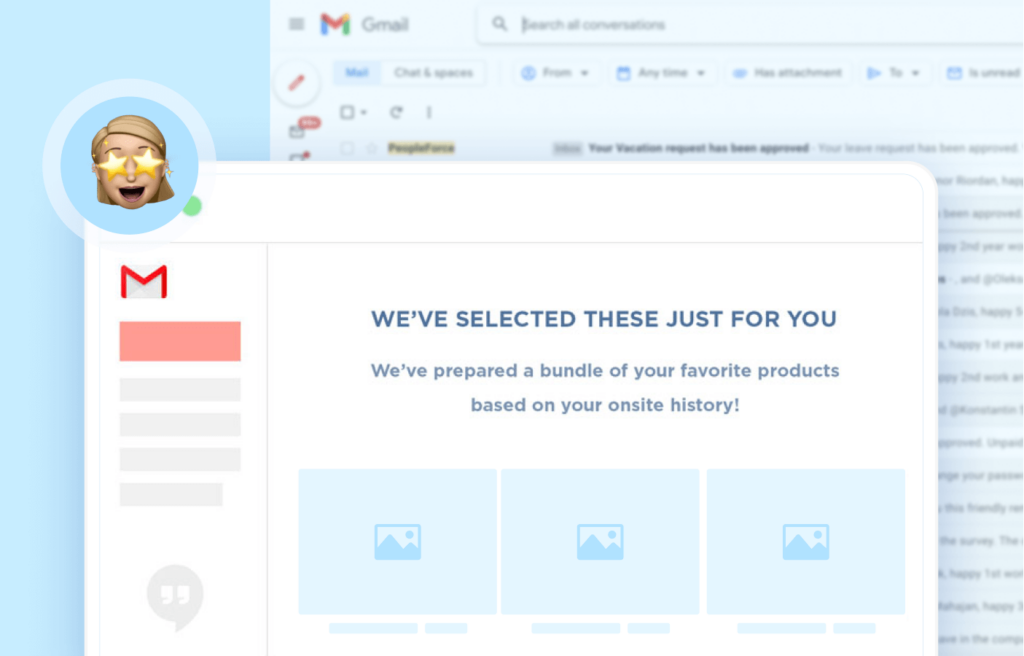
Personalised emails and targeted campaigns speak directly to an individual and encourage them to take interact with your tradeshow. Here’s how they benefit organisers:
Build trust and credibility
The success of any event email marketing campaign hinges on its ability to build trust and credibility with potential attendees. Organisers need to:
1) provide timely and relevant communication
2) share value-packed content
3) deliver on their pain points
When potential attendees see an event specifically pitched to solve their problems, they are more likely to trust and sign up.
Increases audience engagement
Emails are widely used to spread brand awareness, boost website traffic and keep prospects and customers engaged. You can create compelling subject lines to grab the reader’s attention. A snappy, enticing subject line is crucial to increase email open rates and keep the audience engaged before and after the tradeshow.
Encourage signups and nurture leads through drip marketing
Once the event ends, you want to keep the connection going with your visitors. You can use drip marketing to nurture your leads and convert them into customers.
It’s a marketing technique where promotional messages are regularly delivered to customers or prospects on a timed schedule.
Drip marketing can be used to prompt email subscribers to take a particular action – like downloading a product brochure, requesting a demo or signing up for a webinar.
Promote future events
Promote your future shows by building a list of potential attendees and inviting them to sign up for updates. Sending out timely emails with event information and relevant content helps create a buzz and ensures healthy attendance.
Build your mailing list
Personalised emails are a proven way to get new subscribers, send special offers and send content and event updates. This helps build your mailing list, increased loyalty and improves open and click-through rates.
Five ways to personalise your email campaigns
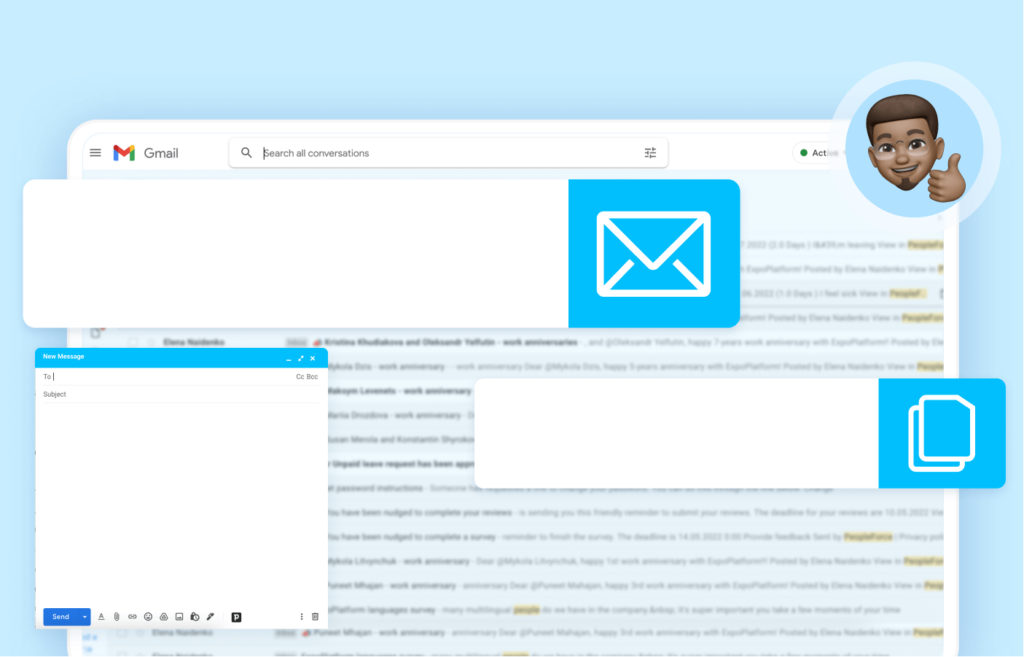
1. Segment your email list
When you send the same message to different people, your open rates can suffer. By segmenting your email list, you can target each group with messages that are relevant to them – increasing the chances that they’ll read and act on them.
2. Address them by their actual name
Using a recipient’s name in the subject line or body makes them feel like you’re speaking directly to them. You can get much more granular than just using people’s first names – try mentioning their job titles or their organisation name to deepen the connection.
3. Include custom fields in your emails
Take personalisation a step further by adding custom fields to your emails. This will give you more information about your recipients and you can create campaigns that are tailored specifically for them.
4. Personalise the “from” name
Another way to make sure an email reaches the right person is by personalising the “from” name. This tells recipients who sent the email and helps ensure that they won’t mistake it for spam. Again, use an actual person’s name instead of just the company.
5. Test or ask your audience what’s best before sending an email campaign
It’s always a good idea to test your email campaign on a small segment of your list to see how they respond. This list can be a curated selection of loyal customers who are willing to share feedback and help you improve your event offerings. This gives you valuable inputs to create emails that are guaranteed to give results.
Types of email templates for events

As a B2B events organiser, it’s important to stay on top of your marketing game. A proven strategy is to use different email templates that are designed to capture the attention of your target audience and encourages them to act.
This saves you time and ensures your messages are consistent and professional. A few things to keep in mind when creating your templates:
- Consider your audience and what information they need.
- Think about the overall look and feel of your brand and how you want to communicate with your contacts.
- Make sure to include a call-to-action (CTA) so that recipients know what you want them to do next.
Here are the different types of email marketing templates you can use:
Event invitation and registration template
Inviting your target audience – including existing customers – is the first step to putting the wheels in motion for your tradeshow’s success. Here’s an example of an invitation email:
Subject: You are invited to [event name]!
Hi [First Name],
We are pleased to invite you to [Event Name] in [date].
[Event description]
Register below to get early access
Thank you,
[Name of organiser – include both person and company]
Event registration confirmation email template
Subject: Your booking is confirmed
Hi [First Name]
Your registration for [event name] is confirmed! We’re looking forward to seeing you at the event.
Here are the event details one more time:
[Event name]
[Event date]
[Event time]
[Event location]
If you have any questions, please don’t hesitate to contact us.
Thank you,
[Name of organiser]
Event reminder email template
An event reminder email is a great way to keep your attendees updated on what to expect, and help them stay organised. Here’s a template to get you started:
Subject: Event Reminder – [Event Name]
Hi [First Name],
We hope you’re as excited as we are for [Event Name]! Here’s a quick reminder of what to expect:
[Event Description]
Date: [Date of Event]
Time: [Start Time] – [End Time]
Location: [Location]
If you have any questions, don’t hesitate to reach out. We can’t wait to see you there!
Thank you,
[Name of organiser]
Event welcome email template
An event welcome email template helps you build relationships with your attendees before your event and ensures a great turnout.
Be sure to include all the key details about the event, including date, time, location, and what to expect. You can also add links to your event website, sponsor websites and social media channels. Highlight any special offers and discounts.
Subject: Welcome to [Event name]!
Hi [First Name]
We are delighted to have your participation at [Event name].
[Event description and details]
Explore more resources [link to content hub]
If you have any questions or queries, do not hesitate to contact [number].
Thank you,
[Name of organiser]
Introduction to ExpoPlatform’s email builder
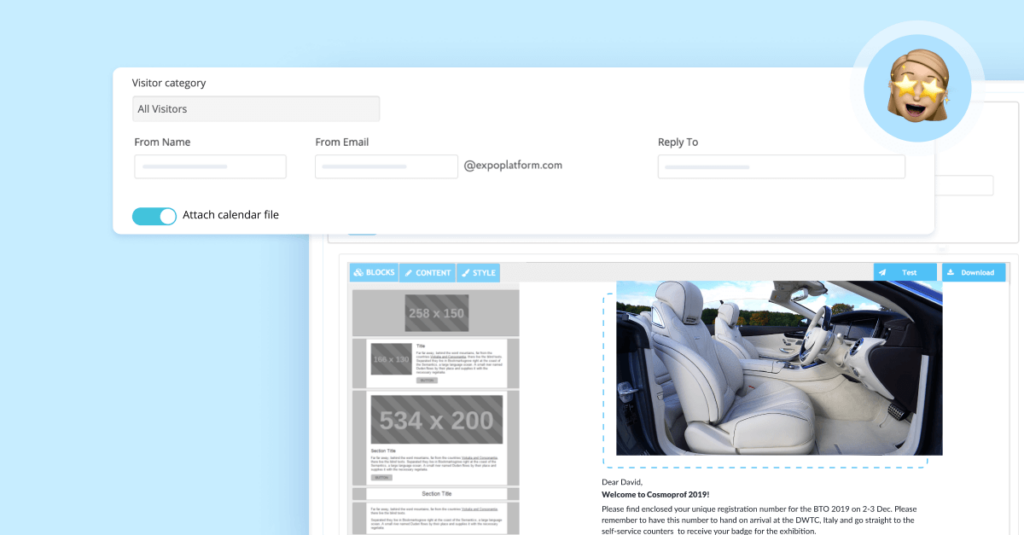
ExpoPlatform’s email editor is found on the event management platform wherever emails are involved. We will explain the thinking behind the email editor and how to use it.
The main screen of the email editor is divided into three parts: header, list of available blocks and the email template.
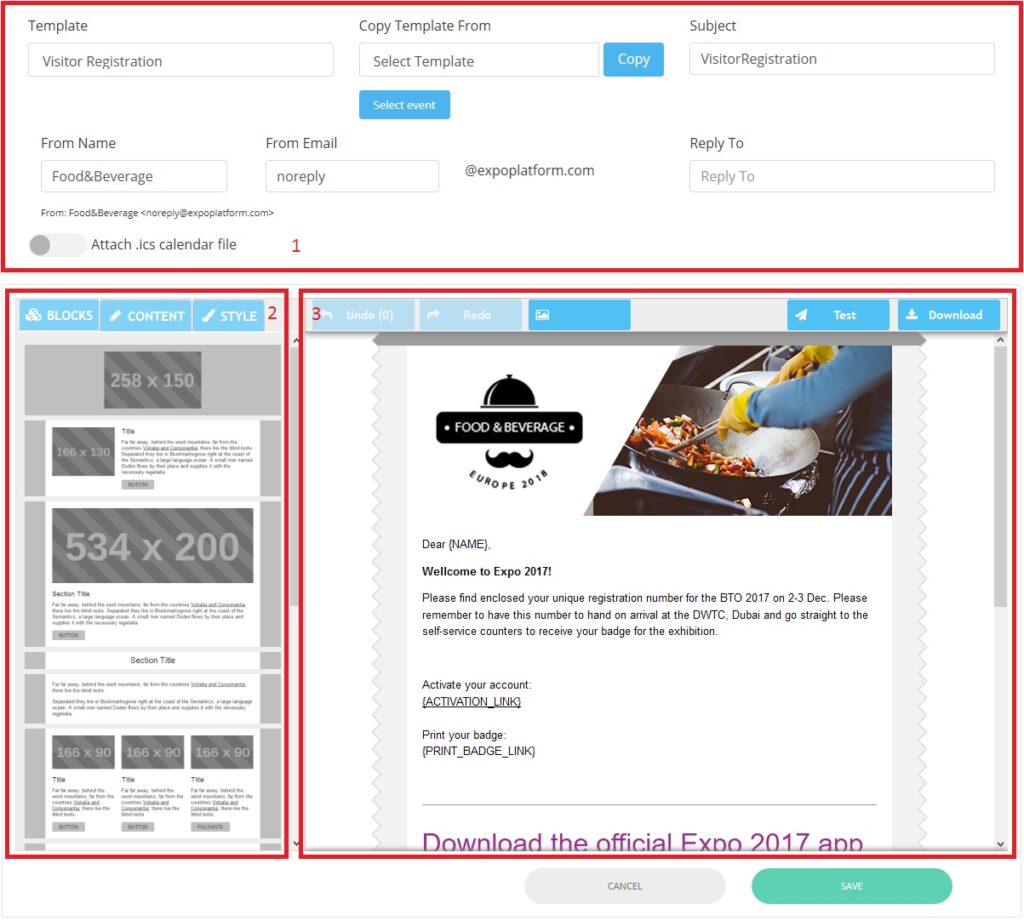
In the header, you can select the sender email, subject and other general settings.
The list contains all available blocks that can be dragged and dropped to the email template. You can also edit the content of the selected block – like image or button links, add header and footer – and its appearance – font, size, colour.

An email template is an area where the email is built. You can select different blocks and place them one by one. All texts in the block can be changed there.
You can also undo/redo your actions, select an image from a gallery, show a live preview, send a test email and download the template in HTML format.
The e-mail templates consist of a list of predefined system variables that are unique and can be added to the text block by clicking on the insert variable button.
After clicking on the variable tab you will be able to see the list of all the predefined variables applicable to that e-mail template.
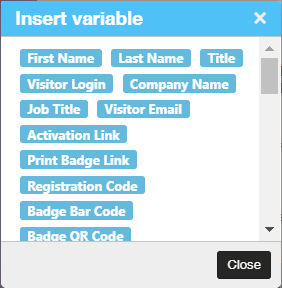
- You can change the positioning of these variables inside the text block
- You can also add the variables which consist of links inside the “button block link field” to enhance the look and feel of your template.
Registration emails
The registration emails in ExpoPlatform can be accessed in the registration setting. The following emails can be configured:
Visitor
- Visitor Registration – this email template is sent to visitors when they register through the registration form of a public event.
- Visitor Self Registration – used for private events when a visitor self-registers via the form of a private event.
- Visitor Approval – this template is configured and sent when a visitor is approved by the organiser for a private event.
- Visitor Repeated Registration – this email template is sent when a visitor registers through the registration form, but already holds an active account (from another event).
- Visitor Registration Cancellation – sent when the registration of a visitor is cancelled for an event.
Exhibitor
- Exhibitor Pre-registration – sent when an exhibitor completes a pre-registration form.
- Exhibitor Password – sent when an exhibitor account is created or made active.
- Exhibitor Team Member – sent when an exhibitor team member is assigned to an exhibitor.
- Exhibitor Registration (organiser notification) – sent to the organiser when an exhibitor completes a pre-registration form.
General
- Reset Password – this email is sent when an account requests a password reset.
- Day Registration Report – sent to organiser once a day with a report of daily registrations.
- Badge Scans Report – sent when reporting badge scans.
Emails to interact with exhibitor manual
Here are the different emails that can be configured in the ExpoPlatform email module while interacting with the exhibitor manual:
Exhibitor notification
- After Page Submit- this email is sent to the exhibitor when they submit one of the pages of the manual.
- After All Manual Submit- sent to the exhibitor when they have submitted all the pages of the manual.
- After Profile Submit- sent when the exhibitor has submitted their profile.
- After Team Member Submit- sent when the team member information is submitted.
- Submission Deadline Warning- sent to the exhibitor when the deadline date for submission of the manual is near.
Organiser notification
- Exhibitor Page Submit- this email is sent to the organiser when the exhibitor submits one of the pages of the manual.
- Exhibitor Profile Submit- sent when the exhibitor submits their profile.
- Exhibitor Team Members Submit- sent when the exhibitor submits details of their team members.
- Exhibitor Manual Submit- sent to the organiser when the exhibitor has submitted all pages of the exhibitor manual.
Vendor notification
- Exhibitor Page Submit- This email is sent to the vendor when the exhibitor submits one of the pages of the exhibitor manual.
Tips to keep in mind for successful event email marketing
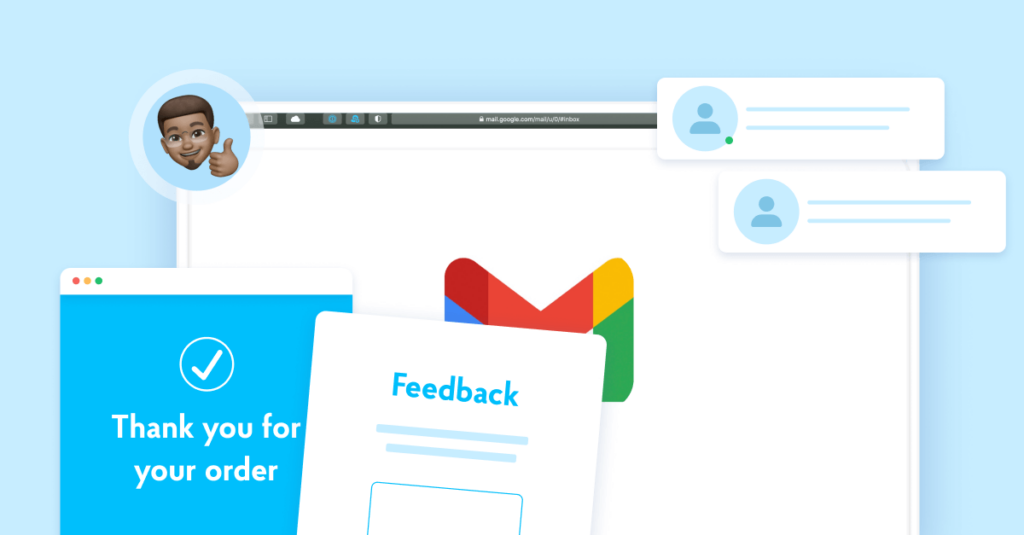
Email marketing is the preferred mode of communication for most B2B organisers. However, there are some pitfalls – over-saturation has made it difficult to stand out from the competition and get the audience to even open their emails. What steps should you take to make your email campaigns more successful?
Here are some tips:
1) Subject lines should be catchy and create FOMO
Your email subject line is one of the most important elements of your email marketing campaign. It’s what entices your subscribers to open your email and if it’s not effective, your email will likely be deleted without being read.
To create a subject line that will make your subscribers want to open your email, you need to create a sense of FOMO, or Fear Of Missing Out. Your subscribers should feel like they will miss out on something important if they don’t open your email. Tips for creating a FOMO-inducing subject line include using words like ‘exclusive,’ ‘limited time only,’ or ‘act now.’
2) Your emails should look visually pleasing on mobile devices
Creating visually appealing emails has always been important, but now it’s more important than ever to make sure that they look good on smaller screens. There are a few things to keep in mind when creating visually appealing emails for mobile devices.
First, use a responsive design. This will ensure that your email looks good on any size screen. Second, keep your content concise. Mobile users are often on the go and don’t have time to read long emails. Third, use large, easy-to-read fonts. Fourth, use images sparingly – too many will overwhelm the reader!
3) Use images that impress
Images help with retention rates and improve click-through rates. They also provide visual interest and engagement which makes them great for social media posts. Use high-quality images that are relevant to your brand and offer value to your audience.
4) Maintain a clean design and avoid clutter
A cluttered email is unappealing to recipients and can be a turn-off. If it’s tough to find the necessary information in a deluge of text and images, your email strategy will likely be unsuccessful. To avoid this, it’s important to maintain a clean design in your email. This means using plenty of white space, clear and concise language, and well-organised content.
5) Have a clear and bold (CTA)
Your email’s CTA is one of the most important elements in your event marketing. It is your opportunity to tell recipients what you want them to do next, and it should be clear, bold, and to the point. A good CTA will encourage recipients to take the desired action – whether it is registering for your event, downloading a white paper or simply clicking through to your website.
Conclusion
A comprehensive email marketing strategy is essential for tradeshow success. Email marketing software plays a big role – you can deliver aesthetically pleasing, professional emails, use personalised templates and set up auto-reminders, confirmation and more.
Keeping your contact list clean and up-to-date and following up with potential leads maximises your chances to make meaningful connections at tradeshows. With a little effort using event tech, you take your tradeshow game to the next level. Check out how ExpoPlatform’s email marketing module can help.
We hope you enjoyed reading this article and found it useful. At ExpoPlatform, we want to help you build better events and communities. Please get in touch and ask for a demo here. Thank you.
There's more you might like

What Europe’s AI Act could mean for eventprofs
The European Union is on the brink of introducing a world-first legal framework for AI, with potential consequences for event organizers. New legislation – the Artificial Intelligence Act – has been endorsed by MEPs with 523 votes in favour, 46 against and 49 abstentions. It is aimed at mitigating risks associated with AI while fostering ...

Events industry has ‘long way to go’ on personalisation
The events industry still has “a long way to go” to improve in-person experiences through AI-powered tools, according to an expert. Matthias Tesi Baur, founder of the ETT Club, was speaking on a webinar panel dedicated to latest findings from the Event Tech Forecast 2024. It found that personalisation of experiences was the biggest opportunity for ...

12 Event Tech-mas treats for a jolly 2024
‘Tis the season to be techie! As we gear up for the holiday season, it’s time to unwrap some festive event tech-mas treats that will make your 2024 merry and bright 🎁 Santa’s workshop might be filled with toys and gadgets, but our event tech-mas workshop is bursting with innovative ideas to level up your ...

